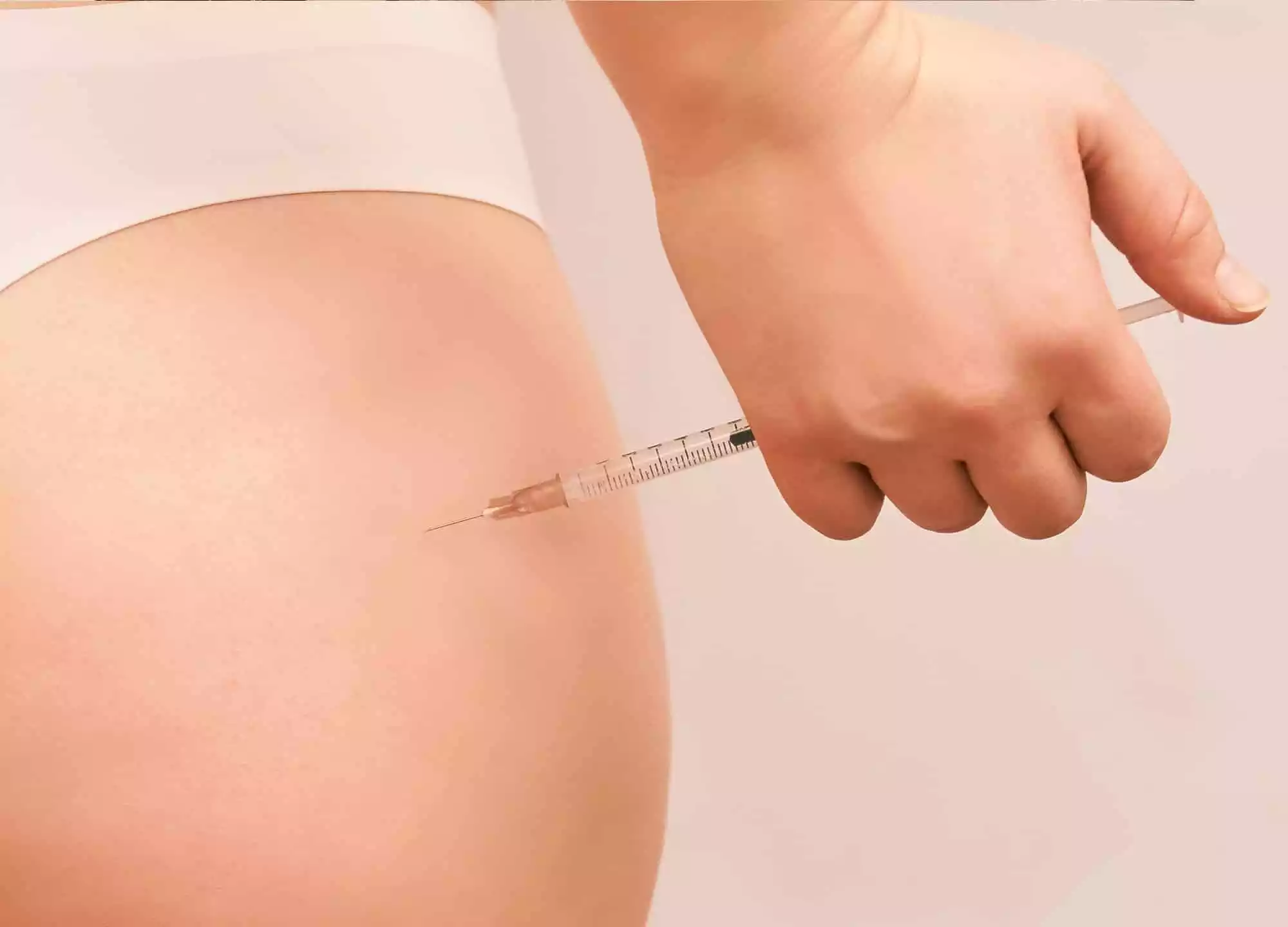
The increasingly popular quest for enhanced posterior volume and contour has brought the term “butt fillers” into the mainstream, yet this blanket term dangerously obscures a vast and often unregulated spectrum of substances, techniques, and, crucially, safety profiles. To ask if butt fillers are “safe” requires first precisely defining which material is under discussion. Medically sanctioned, temporary cosmetic fillers—such as Sculptra (Poly-L-Lactic Acid, PLLA) or sometimes high-volume Hyaluronic Acid (HA) fillers (though often used off-label for this area)—are FDA-approved for specific aesthetic uses elsewhere and, when utilized appropriately by certified medical professionals, have a generally predictable risk profile involving temporary swelling and bruising. However, the severe danger lies in the proliferation of illegitimate, non-medical substances—such as industrial-grade silicone, hydrogel, or even certain unpurified liquid biopolymers—that are administered illegally by unqualified individuals in non-sterile environments. The safety profile of butt fillers is therefore not monolithic; it ranges from manageable, temporary side effects when using approved materials to catastrophic, life-threatening complications when illicit substances are injected. This critical distinction is the foundational knowledge required for any informed patient.
The safety profile of butt fillers is therefore not monolithic; it ranges from manageable, temporary side effects when using approved materials to catastrophic, life-threatening complications when illicit substances are injected.
The primary mechanism of action for the medically acceptable fillers used for gluteal contouring, particularly Poly-L-Lactic Acid (PLLA) or Sculptra, is not immediate volume addition but rather collagen stimulation (neocollagenesis). PLLA microparticles are injected into the deep dermis or subcutaneous fat, and instead of providing instant bulk, they act as scaffolding, triggering the body’s own fibroblasts to gradually produce new collagen tissue around them. This results in a subtle, progressive increase in volume and improvement in skin texture and firmness over a period of several months. Crucially, this treatment requires a high volume of filler and multiple treatment sessions to achieve a noticeable effect, a factor that contributes to the high cost and necessitates patience. Because the volume increase is driven by the body’s natural tissue response rather than the physical displacement by a large, permanent foreign body, the risk profile, while still present, is considerably lower than that associated with permanent, non-absorbable materials.
The Distinct Mechanism of Action: Collagen Stimulation Versus Immediate Volume Displacement
The most significant and terrifying safety concern surrounding gluteal injections stems from the practice of injecting non-medical, permanent liquid silicone or other non-FDA-approved substances. These injections are often performed by individuals without medical licenses, capitalizing on patients seeking dramatic results at impossibly low prices. These materials, sometimes marketed deceptively, do not integrate safely with the body’s tissue; instead, they trigger a severe, sustained foreign body reaction. This reaction can lead to chronic inflammation, the formation of hard, painful lumps called granulomas, disfigurement, and skin necrosis (tissue death). More acutely dangerous is the risk of vascular occlusion or pulmonary embolism—where the permanent material is injected directly into a vein or artery, travels to the lungs, and causes immediate respiratory distress and potentially death. These complications are not rare theoretical risks; they are the deadly, defining consequences of engaging in this illegal and unregulated corner of cosmetic enhancement.
More acutely dangerous is the risk of vascular occlusion or pulmonary embolism—where the permanent material is injected directly into a vein or artery, travels to the lungs, and causes immediate respiratory distress and potentially death.
The fundamental safety difference between gluteal fillers and the traditional, surgical Brazilian Butt Lift (BBL) lies in the material and the anatomical placement. The BBL utilizes the patient’s own autologous fat, eliminating the risk of foreign body rejection, and is strategically injected above the critical plane of the deep gluteal muscles (subcutaneous and intramuscular) to avoid major vessels, an injection depth that is regulated by the surgeon. Conversely, non-surgical fillers, while avoiding general anesthesia, present their own set of vascular risks due to the high volume of foreign material being introduced into an area rich in major blood vessels. While the BBL has its own specific risks, notably fat embolism if injected improperly into the muscle, medically sanctioned fillers, when used correctly, rely on a much lower volume and are ideally placed superficially to harness the collagen stimulation effect, fundamentally differentiating their risk profile from both BBL and illegal, high-volume silicone injections.
Comparing Risks: How Gluteal Fillers Differ from the Surgical Brazilian Butt Lift
Even when utilizing legitimate, FDA-approved materials like PLLA or high-volume HA fillers, the sheer volume required to achieve a noticeable aesthetic result in the buttocks introduces unique logistical and safety challenges. Treating the gluteal area effectively often demands far greater quantities of filler than are used for, say, facial contouring. This high-volume requirement increases the total cost significantly, sometimes rivaling surgical prices, and requires multiple, spaced-out sessions to allow the body’s collagen response time to mature. Furthermore, the higher volume and the large, weight-bearing surface area increase the potential for prolonged post-injection swelling, bruising, and tenderness. Patients must be educated that the results are not immediate and that the aesthetic outcome is dependent on a gradual, biological response, which may vary unpredictably from person to person.
This high-volume requirement increases the total cost significantly, sometimes rivaling surgical prices, and requires multiple, spaced-out sessions to allow the body’s collagen response time to mature.
The key to mitigating the inherent risks associated with all gluteal injections—surgical or non-surgical—is a profound understanding of the gluteal anatomy, particularly the location of major blood vessels and nerves. This knowledge is not optional; it is the ultimate safeguard against catastrophic complications. Any practitioner performing these procedures must utilize a blunt-tipped micro-cannula instead of a sharp needle, which significantly reduces the risk of accidental vessel penetration. More critically, the use of ultrasound guidance is rapidly emerging as the non-negotiable standard of care for high-volume filler injections in this region. Ultrasound allows the injector to visualize the exact tissue plane, identify major blood vessels in real-time, and confirm correct placement, thereby minimizing the primary risk of vascular occlusion and embolism that defines the danger of gluteal enhancement procedures.
The Absolute Necessity of Ultrasound Guidance for Vascular Safety
One of the less-discussed but challenging side effects of large-volume, temporary fillers is the formation of palpable nodules or lumps. In the case of PLLA, these nodules represent areas where the collagen production has been overly aggressive or localized. While often temporary and typically responsive to aggressive massage, the risk of nodule formation increases with high-volume usage and is a testament to the fact that the injection is initiating a complex biological response, not just filling space. Furthermore, the longevity of even the most long-lasting temporary fillers (like PLLA, which can last two years or more) means that the patient must be prepared for the reality of ongoing maintenance. Achieving and sustaining the desired volume requires a long-term commitment to retreatment, making the non-surgical route a perpetual, high-cost investment rather than a one-time fix.
While often temporary and typically responsive to aggressive massage, the risk of nodule formation increases with high-volume usage
The single most critical factor differentiating a safe procedure from a life-threatening one is the qualifications and environment of the provider. Patients must absolutely ensure that the person performing the gluteal filler injection is a board-certified physician—ideally a plastic surgeon, dermatologic surgeon, or a qualified core-specialty physician with extensive training and experience specifically in high-volume body contouring and the use of the chosen filler material. The procedure must be performed in a clean, sterile medical setting, never in a private home, hotel room, or non-medical spa. The provider should be transparent about the exact product used, its lot number, and its regulatory status. Any provider offering permanent, non-absorbable liquid silicone or industrial products for gluteal volume enhancement should be viewed as immediately illegitimate and should be avoided at all costs, as this practice carries an unacceptably high risk of irreversible harm or death.
The Non-Negotiable Criterion: Provider Credentials and Sterile Medical Environment
Beyond the immediate risks, a significant concern with illegal and permanent buttock materials is the difficulty and danger of attempted removal. Once non-medical, permanent substances are injected, they often become encapsulated by the body’s tissue and can infiltrate muscle and nerves, making complete removal virtually impossible. Surgeons who specialize in corrective procedures often find themselves facing a complex, high-risk, and protracted process of debulking and managing chronic infection and inflammation. This reality underscores the irreversible nature of the mistake; once the illegal material is introduced, the patient may face a lifetime of complications, corrective surgeries, and psychological distress. The decision to use any permanent, liquid filler is therefore a commitment to an unknown and potentially tragic future, making the caution against them absolute.
Once non-medical, permanent substances are injected, they often become encapsulated by the body’s tissue and can infiltrate muscle and nerves, making complete removal virtually impossible.
Ultimately, the choice to undergo buttock enhancement, especially non-surgically, demands a sophisticated level of patient skepticism and due diligence. Before considering any procedure, the patient must be fully aware of the material’s FDA status for that specific area and the provider’s specific board certification. They must understand that non-surgical results are typically subtle and cumulative, requiring significant investment in both time and money. Furthermore, they should demand that the provider uses ultrasound guidance to ensure vascular safety. The patient is the final gatekeeper of their own safety, and relying solely on low price or dramatic promises, particularly when illicit materials are involved, is the most dangerous calculation one can make in the realm of cosmetic enhancement.
Informed Choice: Patient Vigilance as the Ultimate Safety Mechanism
Butt fillers are safe only when utilizing FDA-sanctioned, temporary materials and demanding absolute safety standards—including a board-certified physician and mandatory ultrasound guidance—to mitigate catastrophic vascular risk.
